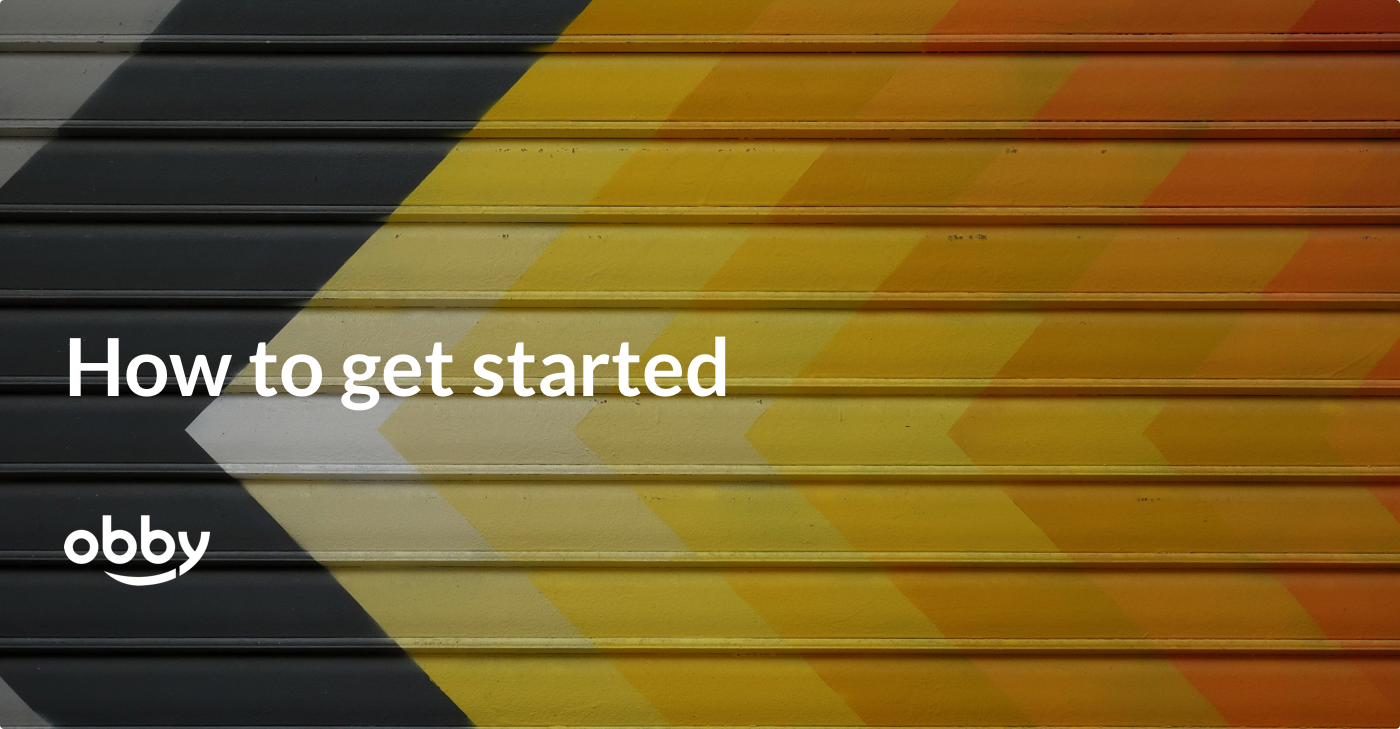
Here at Obby, London’s leading education marketplace, we are building a business helping independent educators build a sustainable teaching business. Whether you are an artist and want to teach painting or pottery on the side, a dance teacher wanting to grow your business, or you teach anything else, from languages to coding to creative writing - Obby’s mission is to help you do what you love.
We work with hundreds of independent teachers who have set up teaching businesses and have helped tens of thousands of Londoners learn new things - therefore, we feel like we have some unique insight that we are keen to share with you on how to successfully build a teaching business.
We have split this guide into four parts to take you through various stages of getting up and running:
- Part 1 - Getting started: How to get into teaching
- Part 2 - Marketing 101: How to find and attract students to your classes
- Part 3 - Your first class: Creating the perfect in-class experience
If you want to get started teaching, book an Obby here!
Obby Teaching Guide Part 1 - Getting Started: How to Get Into Teaching

Setting up a business or new venture is never easy. Trust us, we know! We, like you, are entrepreneurs who are trying to make a living by doing what we love. We have put together this guide by talking to several of our teachers who have recently started a business teaching others.
Find your niche - what do you want to teach?
If you are thinking about starting to teach, you will probably already have an idea of what sort of things you would like to share with the world. But it’s still worth going through a checklist to see what areas you would excel at!
1. What are you great at?
Maybe you are great at hands-on teaching, but less so on the theory side of things. This might be an opportunity to partner with someone you know, or someone from the Obby Community.
2. What are you uniquely qualified in to teach?
Have you had specific training in a certain field, or maybe you are a lifelong practitioner? If so, this is your time to shine and definitely something you should be shouting from the rooftops! Students love learning from teachers with deep-rooted experience.
3. Have you already taught in the past?
Beyond that being valuable experience, you can also reflect on what has worked well in the past and what hasn’t. We are all about Rethinking Learning, don’t be afraid to try new things!
Let’s talk about logistics
1. Class vs. course - how deep is your love?
Are you planning on teaching a series of one-off classes, or a more in-depth course? Or perhaps both?
Teaching some taster classes alongside in-depth, longer-term courses gives customers the opportunity to fall in love with your topic (and amazing teaching) before taking up a more significant time and cost investment.
In that case, we recommend drawing up a curriculum of what will be covered, and how long each topic is likely to take. You want to ensure that customers learn a suite of topics they are interested in, but not too many things so they don’t follow (set your students up to succeed!).
Protip: Workshop 305, a community centre and pottery studio in Wimbledon, run regular evening taster sessions to help customers figure out whether they would enjoy signing up to their 8-week long courses and have had great success with it.
2. Preparation - what do you need to get started?
Some teachers are lucky, they can teach their classes wherever, whenever, without much, if any, prep needed (photographers, we are looking at you!).
But for the rest of us, we need to plan. Materials or ingredients need to be sourced ahead of time. We understand that this is easier said than done! But it is worth figuring out ahead of time what you need, and where you can get them from so that you avoid finding yourself in a pickle shortly before a class.
Additionally, if you need something specific that is hard to source, why not try your luck asking the Obby Community? If you need assistance funding your business, we can also help. Just get in touch with us and we will help you out where we can!
Finally, we have prepared a handy little checklist for you to be prepared for all your upcoming classes. More on that in our article on Your first class: Creating the perfect in-class experience.
3. Venue spaces
Did you know that, on average, venue space rental costs are the single-highest teaching expense?
Some of you may already have a venue space, but for those who don’t we have a few solutions.
Obby teachers frequently post and share their venues in the Obby Community Notice Board for you to share their space.
Additionally, we have several partnerships with venue space providers across London that allow us to help you source a venue space at a fraction of the cost. You can find out more here.
4. Scheduling
Your availability and scheduling is one of the most important factors in successfully launching your teaching business.
We advise strongly against making the mistake of “trying things out” with one or two class dates.
The reasons for this is that customers want choice. In fact, over 90% of Obby bookings have more than 3 bookable dates. Just like you, customers lead busy lives. If they are looking at your class and want to take it, don’t give them an excuse to not book by not having enough options for them.
Protip: this is why we created our “Request a Date” feature - so that customers who do find and love your class, but can’t make the dates listed, are automatically sent an email when you do add new dates.
If scheduling multiple dates is difficult due to venue space requirements, check out some of Obby’s venue space options - we have super flexible cancellation policies with our venue space partnerships.
5. Pricing
Pricing is covered in more depth in our section on Your first class: Creating the perfect in-class experience. But to help you get started, we recommend starting with figuring out your costs on a “bottoms-up” basis.
So take a pen and paper, or an excel spreadsheet, and ask yourself what all your costs are!
Once you have figured those out, you can layer in how much you would like to earn and calculate the number of guests you need to cover your costs.
Protip: Try and keep your minimum number of guests required as low as possible, whilst still keeping prices competitive. Smaller class sizes get significantly better reviews, which in return leads to more bookings (and are therefore favoured by Obby’s search ranking).
Get free support
Whether you are an Obby teacher, or not (even if you have no intention of joining), we are here to help! We offer every prospective teacher a free 30-minute consulting call with one of our Partnership Managers. They can help you learn about how to get your business started, and answer any questions you might have. Just get in touch with us here - we would love to help!
Alternatively, if you want to join the Obby community and start teaching now, you can apply to become a Obby teacher here.
Next steps
If you are all ready to go, find out how to start marketing and managing your classes in Obby Teaching Guide Part 2 - Marketing 101: How to find and attract students to your classes.
Obby Teaching Guide Part 2 - Marketing 101: How to Find and Attract Students to Your Classes

Using Obby
Obby is a platform to support independent teachers building a teaching business. Our marketplace helps provide you with a platform for students to find you and your classes, courses or lessons. Our software tools help you engage and retain customers, as well as manage your business by providing value-added services such a booking management tools and venue space rental.
So of course we think Obby is the bees-knees and the best place for you as a teacher to attract students to your classes. If you are not already part of the Obby community, you can apply to join here. If that’s not for you, that’s also fine - hopefully the rest of this guide can be of help anyways!
Perfecting your listing
Prospective students really want to read about what they will be learning. It is your job as the teacher to help them on that journey. Take the time to write a well-crafted class listing - you only have to do it once, and it will help loads!
Specific topics we recommend talking about are:
- What will students be learning about? If it is a longer course, or the class is split into several parts, tell the full story - customers want to know!
- What level can students expect to get to? The best classes help students reach a sense of accomplishment, the worst just show someone how to make something without any real learning. Setting clear expectations is key.
- Share what makes your class special and don’t be afraid to big yourself up!
Schedule and availability
We covered the importance of scheduling and availability in more detail in Part 1 of Obby’s guide to building a business through teaching, Getting started: How to get into teaching. In this section, we turn it into actionable data for you:
- Over 80% of Obby bookings are for classes that have 3 or more available dates for customers to choose from
- The majority of students book classes 2+ months ahead of the class taking place - so think long-term with your scheduling
- The most popular days for classes (and recurring courses) are Saturdays, Sundays, and Tuesdays (after work / evenings)!
Protip: Think of offering Anytime Classes. Over 20% of Obby bookings use our Anytime feature, which allows customers to book your class at anytime that suits both of you, instead of you having to pre-define dates. Several Obby hosts have built their entire business around this feature!
Obby’s algorithm factors your schedule and availability into its rankings, so make sure you are keeping your calendar up to date at all times. To find out more about Anytime, get in touch here.
Reviews and pricing
These two aspects of your classes are correlated. We recommend new Obby teachers start off with slightly lower prices, and gradually work your way up. This will make it easier for you to get initial students, show off your fantastic skills, and let the reviews speak for themselves.
<img src="http://res.cloudinary.com/obby/image/upload/v1527088957/Part2_Graph_ft7gas.png" alt="How to experiment with your pricing on Obby" style="float: center;width:50%;text-align:center;" />
For every few reviews (let’s say 3-5, it’s not an exact science, more recommended guidelines), you can increase your prices by a few percentage points.
Protip: Don’t go overboard. If you suddenly find yourself as the most expensive option in the market, you might have gone too far!
Another important note on pricing is that customers love to know what is included, and don’t like being charged extra on the day. Be transparent and include the cost of certain things in the pricing. Not including everything in the price upfront, and asking customers to pay additional on the day, leads to negative reviews every time!
Friends and family
Your friends and family already know you, and will be keen to help you in your entrepreneurial ventures! This also makes them most likely to help you spread the word.
Tell them about your teaching plans and share your listings with them. Share what makes your classes unique so they have something to boast about!
Social media
Social media isn’t what it once was. It is increasingly difficult to attract an audience on Facebook, Instagram, or Twitter, without paying for it. Therefore, we don’t advise you to spend too much of your efforts trying to build up a large following from scratch, although we do advise having some of your best content on there, easily accessible, so prospective students can find out a bit more about you and know what to expect. We like to think of it as a complementary tool which is important to have to build your brand and set customer expectations, but don’t advise relying on it as your primary customer acquisition channel.
Broader network (e.g. community groups)
This is an underrated strategy that we highly recommend! Find closely aligned community groups (e.g. Facebook local community groups) and share your classes and profile with them. The members may not know you, but it is likely they emphasize with your journey and will be keen to help out - particularly if there is a local or topic relation!
Content creation
Contribute to Obby’s guides, blog, or other content. This will increase your visibility and help you attract more customers. If you are already an Obby partner, you can find out more about it on your dashboard, if you are not yet an Obby partner, you can apply to join here.
Next steps
Classes up and running, customers have booked on, now what? Read part 3 of our guide - Your first class: Creating the perfect in-class experience.
Obby Teaching Guide Part 3 - Your First Class: Creating the Perfect in-class Experience

We have created a simple checklist for you to be on-top of every single class, or course, you teach! Check it out here link.
Ahead of time
People always say it, but for good reason - preparation is key. In our industry, this comes in various forms, but the key things to remember are:
Make sure you have spent time thinking and working on your online profile. Whether this be an event listing on your own site or on an external provider, it is extremely important that what you are advertising is up to date, accurate and most importantly clear to the customer.
Prepare your venue and course materials with plenty of time to spare. It is important to make sure that your customers know well in advance where they are going and how to get there. Don’t leave purchasing your materials to the last minute as you then might need to turn away customers (the worst!)
Build your own checklist for the day before and the day of the class. It is really helpful to make sure that each class is consistent and you are delivering a top-notch service each and every time, a checklist is the perfect way to do that. If you don't already have one, we have created one for you here.
During
Have a proper welcome
Even if it is just a little table at the entrance with a plant or a sign, make sure that either you (or your assistant if you have one) are the first person the customer talks to as they walk in the door. Show them where to put their bag, hang their coat and where the toilets are - its minor, but makes people instantly feel comfortable.
Prepare your space
Have your table / studio prepared in advance with all the materials layed out. There is nothing more exciting than seeing a table full of wool, needles and beautiful instruction booklets ahead of a knitting class and there is nothing worse than having to wait for 5 minutes in the middle of a session as you are handed round the materials you need - for a customer that is wasted time.
Encourage questions and collaboration.
When it comes to learning people love asking questions and collaborating / supporting one another, it’s why the experience is also social and fun too! From the very outset, make sure to let your customers know that you encourage questions and that everyone is on the same learning journey.
After
Create great follow-on content
Have actionable next steps and materials that can be taken away from the class. Customers love being able to go away and practice their skills, only you can really enable them to do that. It is quick, cheap and easy to prepare small (take-home) packs for them to use to continue their learning journey.
Note: if you do create take-home packs, please remember to include them in the upfront price, not ask for extra payment in class. For more on pricing see our guide on Getting started: How to get into teaching.
Review yourself
Whilst your customers are learning, you should be learning too. There is nothing better than hearing positive (and negative) feedback about your workshop, as it will help you double down on the successful parts of fix the parts that are not working so well.
Try to always send some form of communication after your class rather than gathering feedback in the class. Customers can feel uncomfortable about leaving constructive feedback directly with you, so whilst you might get lots of feedback in person, it won’t always be honest.
Most importantly, take the time to read the feedback, look for patterns and then make the changes, it will not be a waste of time, promise!
Or, if you want to dive straight in and apply to become an Obby teacher, you can do so right here.

